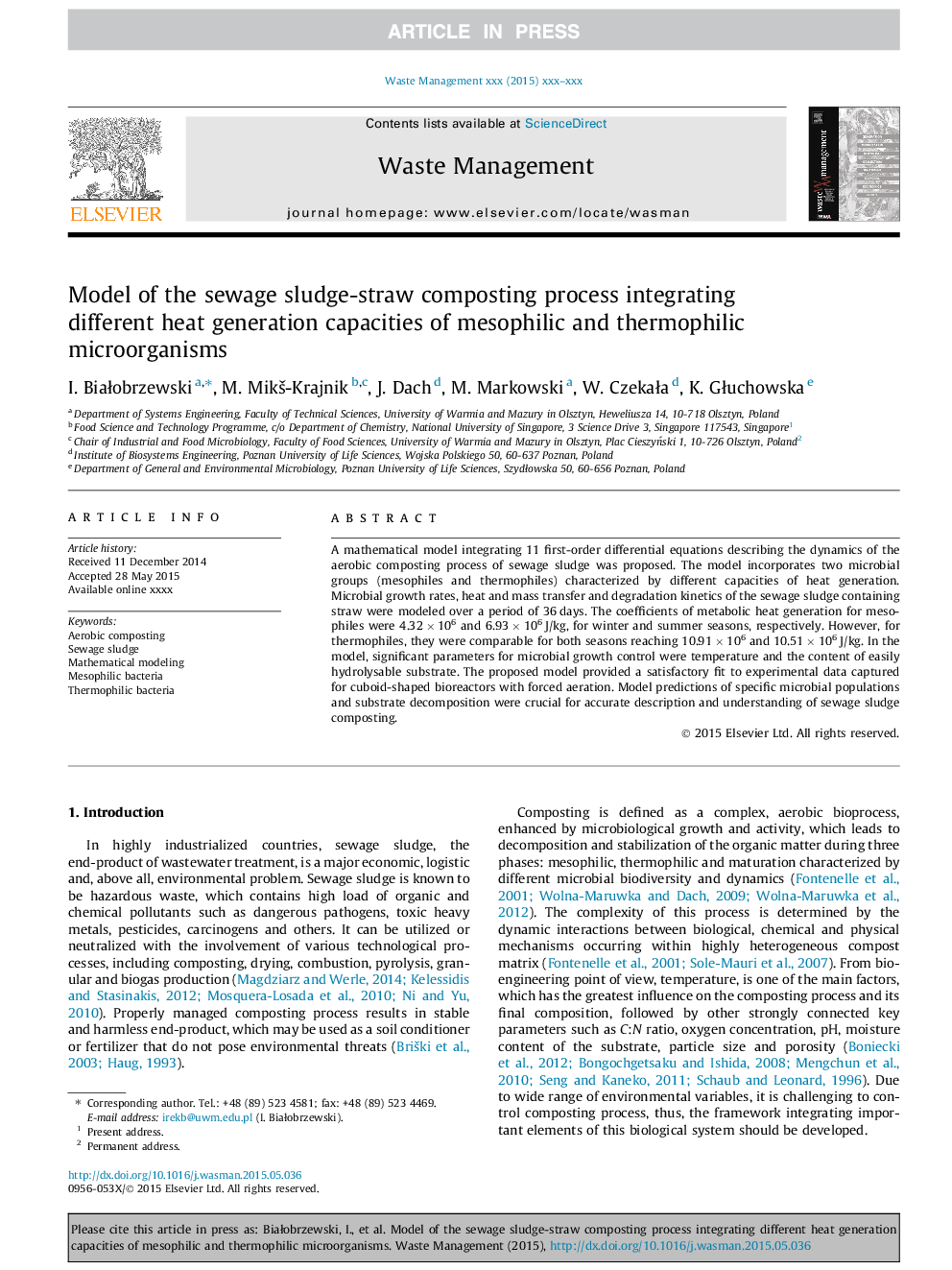| Article ID | Journal | Published Year | Pages | File Type |
|---|---|---|---|---|
| 6353897 | Waste Management | 2015 | 12 Pages |
Abstract
A mathematical model integrating 11 first-order differential equations describing the dynamics of the aerobic composting process of sewage sludge was proposed. The model incorporates two microbial groups (mesophiles and thermophiles) characterized by different capacities of heat generation. Microbial growth rates, heat and mass transfer and degradation kinetics of the sewage sludge containing straw were modeled over a period of 36Â days. The coefficients of metabolic heat generation for mesophiles were 4.32Â ÃÂ 106 and 6.93Â ÃÂ 106Â J/kg, for winter and summer seasons, respectively. However, for thermophiles, they were comparable for both seasons reaching 10.91Â ÃÂ 106 and 10.51Â ÃÂ 106Â J/kg. In the model, significant parameters for microbial growth control were temperature and the content of easily hydrolysable substrate. The proposed model provided a satisfactory fit to experimental data captured for cuboid-shaped bioreactors with forced aeration. Model predictions of specific microbial populations and substrate decomposition were crucial for accurate description and understanding of sewage sludge composting.
Keywords
Related Topics
Physical Sciences and Engineering
Earth and Planetary Sciences
Geotechnical Engineering and Engineering Geology
Authors
I. BiaÅobrzewski, M. MikÅ¡-Krajnik, J. Dach, M. Markowski, W. CzekaÅa, K. GÅuchowska,
